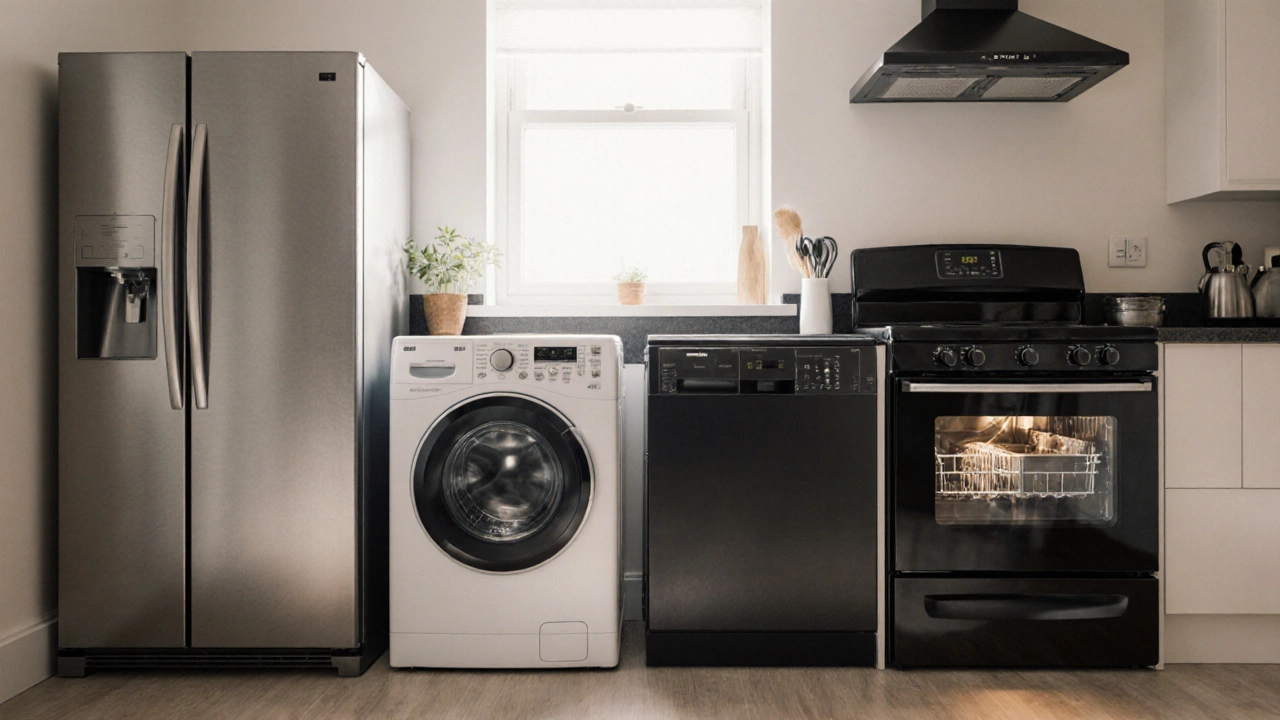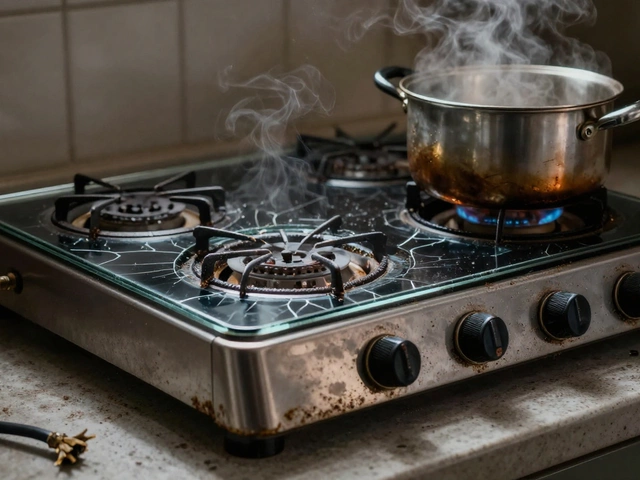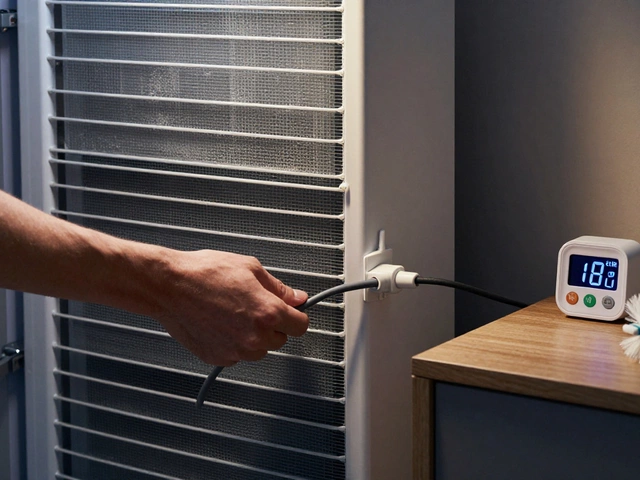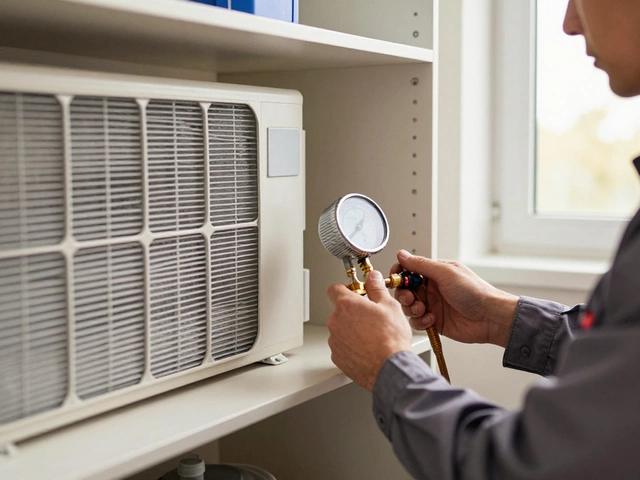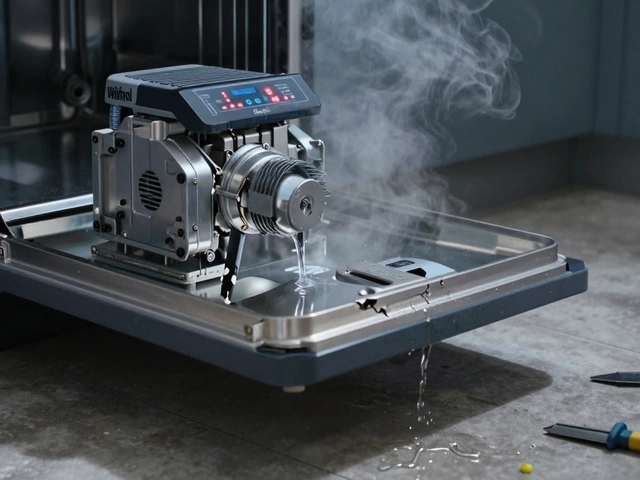Appliance Energy Cost Calculator
Calculate Your Energy Costs
Find out how much your appliance costs to run annually based on your electricity rate and usage patterns.
Estimated Annual Cost
Note: The calculator uses average energy usage patterns for each appliance type. For the most accurate results, use your actual usage data from your utility bills.
When you hear the question “What are 4 appliances?” you probably picture the big, noisy machines that keep your kitchen running and your laundry clean. Knowing which appliances belong to that core group helps you maintain them better, choose the right model, and avoid costly repairs. Below you’ll get straight‑forward definitions, key specs, and the most frequent issues for each of the four staples.
Key Takeaways
- Appliances are machines that perform essential household tasks such as cooling, cleaning, cooking, and drying.
- The four most common household appliances are the refrigerator, washing machine, dishwasher, and oven.
- Each appliance has a typical energy use range, expected lifespan, and a handful of common problems you can watch for.
- Regular maintenance-cleaning coils, checking hoses, and descaling-extends life by 2‑5 years on average.
- Understanding these basics makes it easier to decide when DIY fixes are enough and when to call a professional.
What Is an Appliance?
Appliance is a machine designed to perform a specific household function such as cooking, cleaning, heating, or cooling. In everyday language, the term usually refers to large, electrically powered devices that are permanently installed or semi‑portable in the home. From a service‑provider perspective, appliances break down in predictable ways, so knowing their core components is the first step toward effective troubleshooting.
Refrigerator
Refrigerator is a cooling appliance that keeps food and beverages at safe, low temperatures. Modern units range from 18 to 28 cubic feet, use between 100 and 800 kWh per year, and typically last 10‑15 years.
- Primary function: Preserve perishable items by maintaining an interior temperature of 35‑38°F (2‑3°C).
- Energy use: Standard models consume about 1.5 kWh per day; Energy‑Star models drop that to roughly 1.0 kWh.
- Common issues: Frost buildup, leaking water, noisy compressor, and faulty door seals.
- Simple maintenance: Clean the condenser coils every six months and replace the water filter annually.
Washing Machine
Washing Machine is a laundry appliance that cleans clothes using water, detergent, and mechanical agitation. Front‑load units dominate the market, averaging 4‑5 cubic feet, using 300‑500 gallons per load, and lasting 8‑12 years.
- Primary function: Remove dirt, stains, and odors from textiles.
- Energy use: Approximately 0.9 kWh per load for high‑efficiency front‑loaders.
- Common issues: Leaking hoses, error codes due to unbalanced loads, and motor burnout.
- Simple maintenance: Run a monthly cleaning cycle with white vinegar and wipe the rubber gasket.
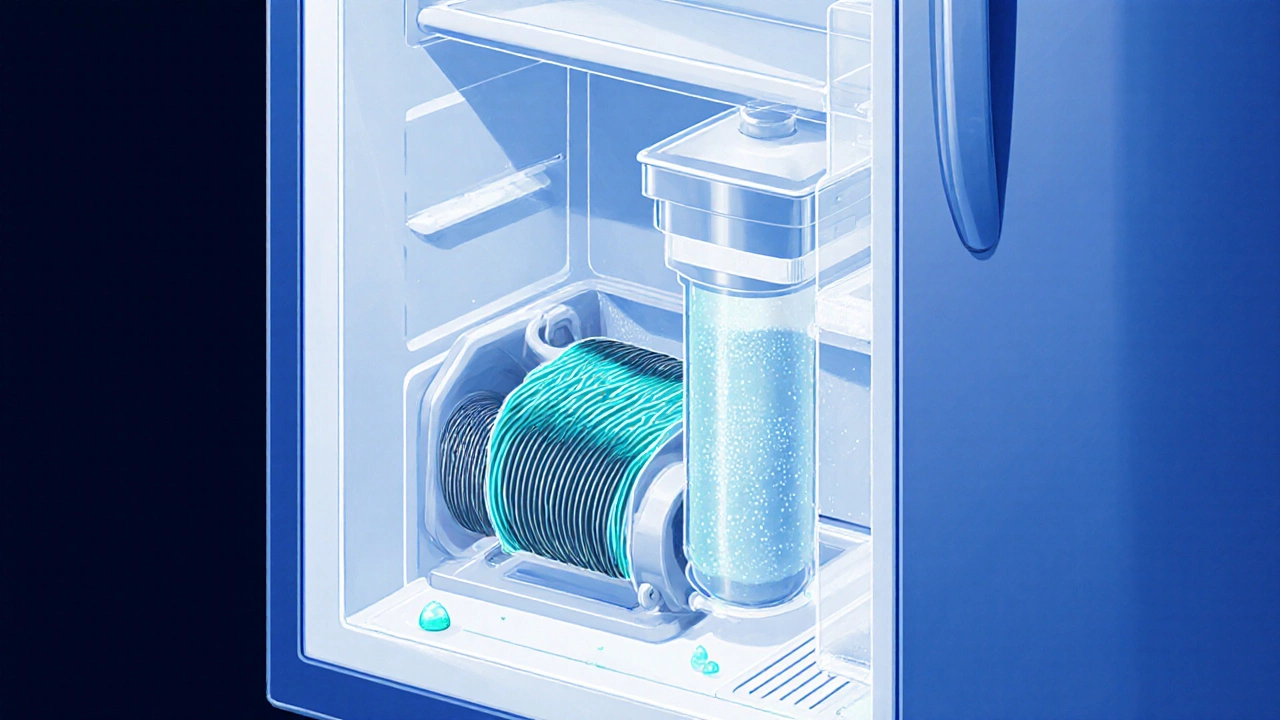
Dishwasher
Dishwasher is a kitchen appliance that automatically washes dishes, glasses, and utensils using water, detergent, and heat. Typical capacities are 12‑16 place settings, with an average energy use of 1.5 kWh per cycle and a lifespan of 9‑10 years.
- Primary function: Remove food particles and sanitize cookware.
- Energy use: Energy‑Star models use about 0.9 kWh per standard cycle.
- Common issues: Clogged spray arms, foul odors, and malfunctioning heating element.
- Simple maintenance: Clean the filter weekly and run a hot water rinse with a dishwasher cleaner monthly.
Oven
Oven is a cooking appliance that uses dry heat to bake, roast, and broil food. Conventional electric ovens range from 3.5 to 5.5 cu ft, consume 2‑5 kWh per hour of use, and typically last 12‑15 years.
- Primary function: Generate consistent, controllable heat for cooking.
- Energy use: About 2.2 kWh per hour on average for a 4‑cu ft model.
- Common issues: Uneven heating, faulty thermostat, and broken door hinges.
- Simple maintenance: Clean the interior after each use and check the seal for wear yearly.
Quick Comparison of the Four Core Appliances
| Appliance | Typical Size / Capacity | Avg. Energy Use | Expected Lifespan | Most Frequent Issue |
|---|---|---|---|---|
| Refrigerator | 18‑28 ft³ | 100‑800 kWh/yr | 10‑15 yr | Frost buildup |
| Washing Machine | 4‑5 ft³ | 0.9 kWh/load | 8‑12 yr | Leaking hoses |
| Dishwasher | 12‑16 place settings | 0.9‑1.5 kWh/cycle | 9‑10 yr | Clogged spray arm |
| Oven | 3.5‑5.5 cu ft | 2‑5 kWh/hr | 12‑15 yr | Uneven heating |
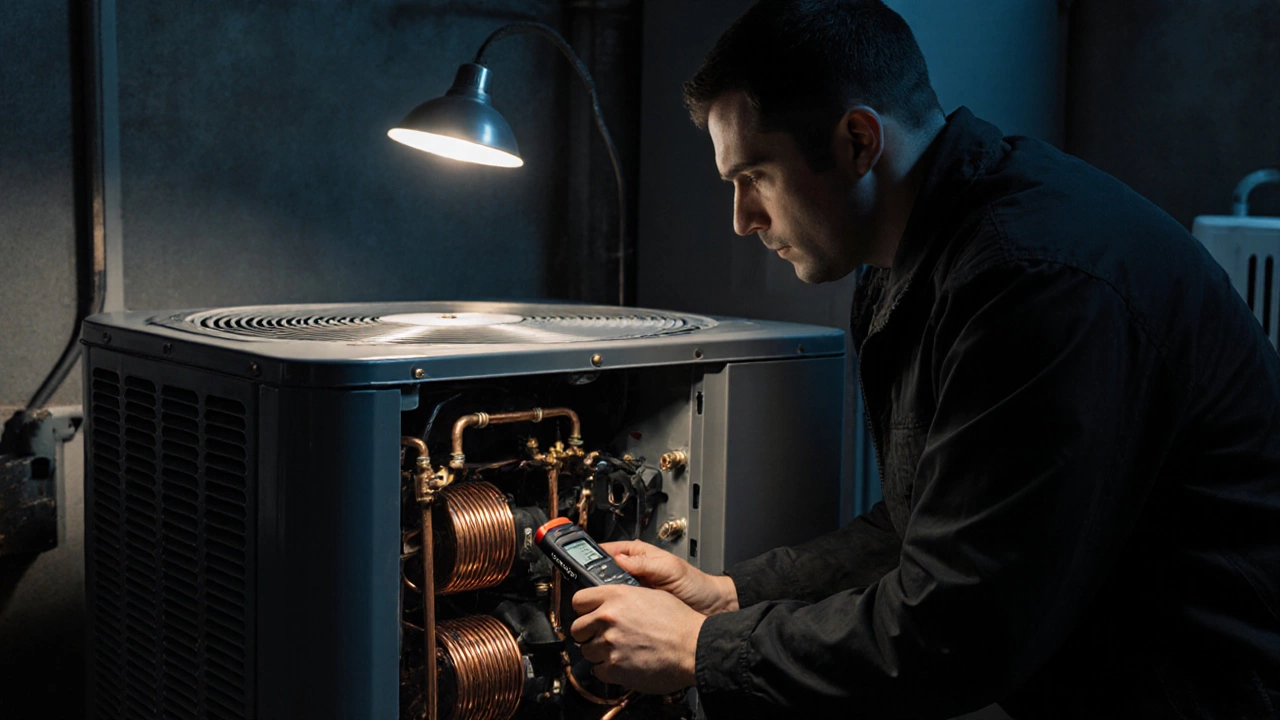
Tips for Extending Appliance Longevity
- Schedule regular cleaning. Dusty coils, grimy filters, and built‑up residue are the top culprits for premature failure.
- Watch for early warning signs. Unusual noises, error codes, or water pooling often precede a larger breakdown.
- Maintain proper ventilation. Refrigerators and ovens need space around them for heat exchange.
- Use the right detergents. High‑phosphate powders can corrode dishwasher components.
- Don’t overload. Over‑filling a washing machine or oven can strain motors and heating elements.
When to Call a Professional
If you’ve tried basic troubleshooting and the appliance still misbehaves, it’s time to reach out to a certified service technician. Common scenarios that warrant professional help include:
- Compressor failure in a refrigerator - the part is expensive and requires proper refrigerant handling.
- Motor or drum issues in a washing machine - specialized tools are needed to replace bearings safely.
- Electrical faults in an oven that trigger circuit breakers - only qualified electricians should work inside high‑voltage panels.
- Persistent error codes after multiple resets - a diagnostic scan can pinpoint hidden sensor problems.
Frequently Asked Questions
What counts as a home appliance?
A home appliance is any powered device that performs routine household tasks, such as cooling (refrigerator), cleaning (washing machine, dishwasher), cooking (oven), or drying (dryer).
How often should I clean my refrigerator coils?
At least twice a year, or whenever you notice the fridge running hotter than usual.
Why does my washing machine leak?
Leaking is usually caused by a worn‑out hose, a cracked tub seal, or an overloaded load that forces water out of the drum.
Can I use regular detergent in a high‑efficiency dishwasher?
No. High‑efficiency models require low‑sudsing detergents; regular powder can leave residue and damage the spray arm.
What’s the average energy cost of running an oven?
A 4‑cu ft electric oven uses about 2.2 kWh per hour. At a typical U.S. rate of $0.13/kWh, that’s roughly $0.29 per hour of cooking.
Understanding these four core appliances gives you the confidence to keep them humming, catch problems early, and know exactly when a professional’s help is worth the call.
